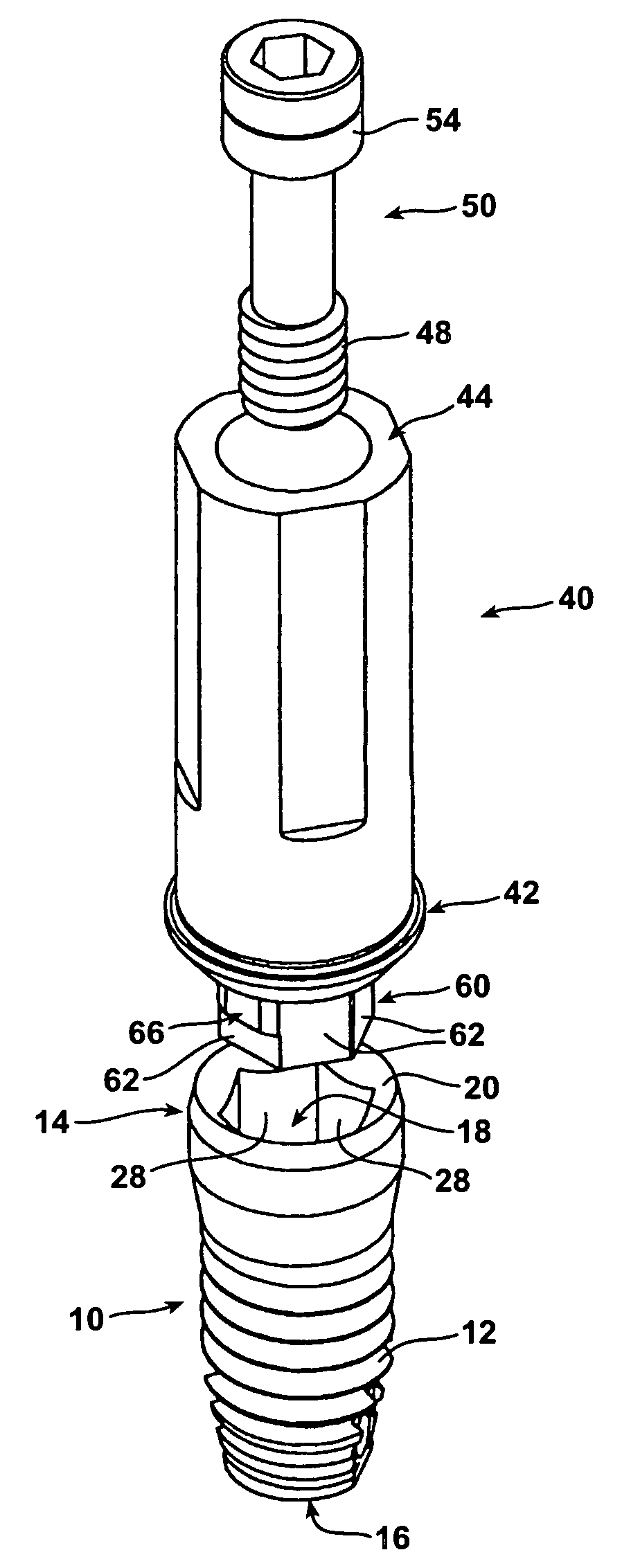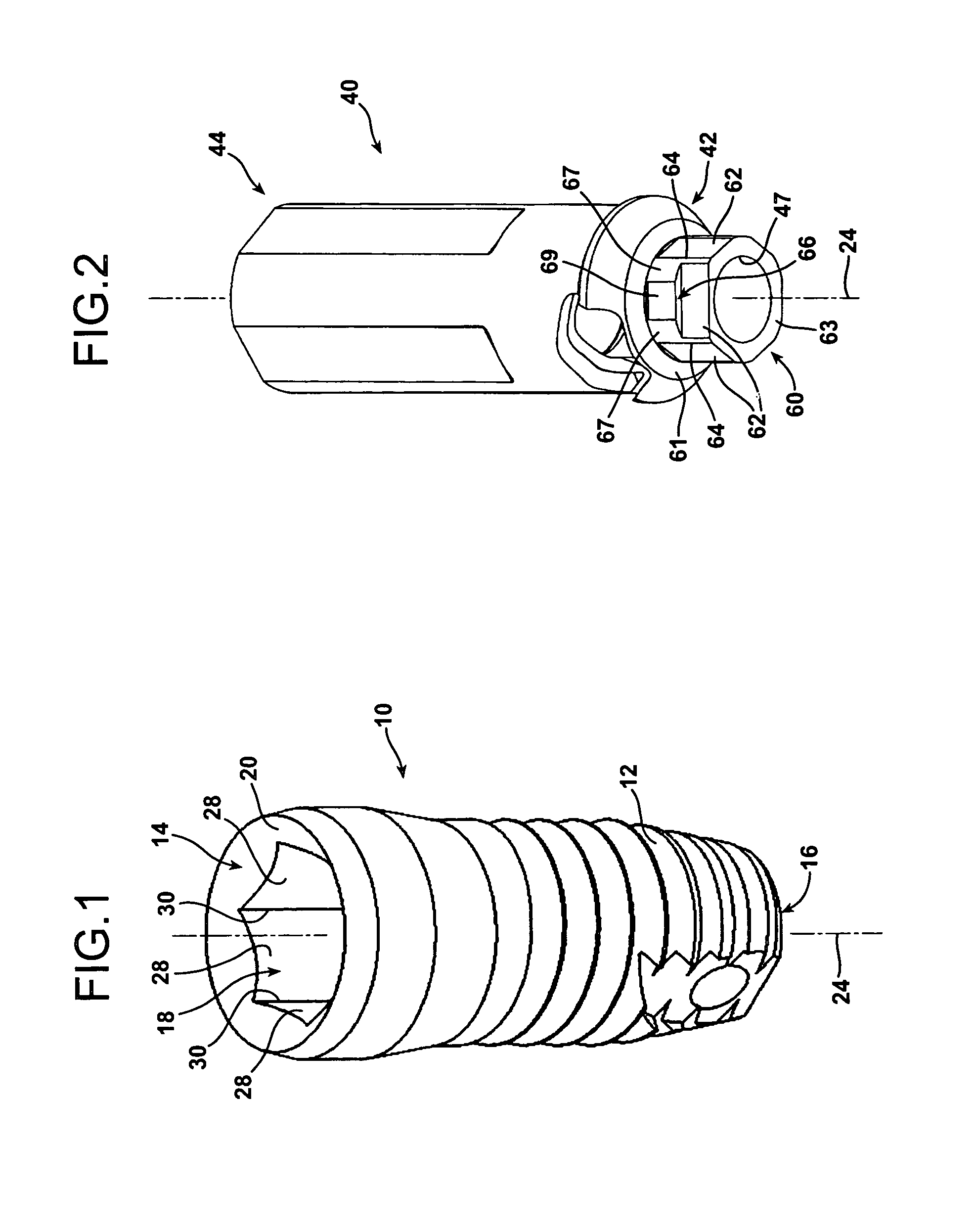Rotationally immobilized dental implant and abutment system
a dental implant and abutment technology, applied in dental implants, dental surgery, medical science, etc., can solve the problems of angular misalignment of the artificial tooth about the axis, certain difficulties with the prior system, and the need for a sturdy foundation for dental crowns, so as to improve the arrangement of osseodontics.
- Summary
- Abstract
- Description
- Claims
- Application Information
AI Technical Summary
Benefits of technology
Problems solved by technology
Method used
Image
Examples
Embodiment Construction
[0047]FIGS. 1 and 17 through 20 illustrate an endosseous dental implant member 10 of the type utilized for endosseous dental implants in the jaw of a patient. The endosseous dental implant member 10 is typically fabricated as a titanium structure having external threads 12 designed to be screwed into the jaw bone of a patient and penetrate into the bone to anchor the implant member 10 relative to the patient's jaw. The implant member 10 has a gingival end 14 and an opposite osseous end 16. When the implant member 10 is installed in the jaw of the patient, the osseous end 16 resides well into the jaw bone structure of the patient, while the gingival end 14 is located at the surface of the patient's gum in the recessed cavity therein vacated by the tooth being replaced.
[0048]A socket 18 is formed into the structure of the implant member 10 at the gingival end 14 thereof. The socket 18 has a uniform, noncircular cross section throughout, and is preferably of a polygonal configuration. ...
PUM
 Login to View More
Login to View More Abstract
Description
Claims
Application Information
 Login to View More
Login to View More - R&D
- Intellectual Property
- Life Sciences
- Materials
- Tech Scout
- Unparalleled Data Quality
- Higher Quality Content
- 60% Fewer Hallucinations
Browse by: Latest US Patents, China's latest patents, Technical Efficacy Thesaurus, Application Domain, Technology Topic, Popular Technical Reports.
© 2025 PatSnap. All rights reserved.Legal|Privacy policy|Modern Slavery Act Transparency Statement|Sitemap|About US| Contact US: help@patsnap.com



